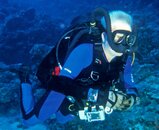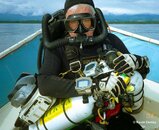I am not confused. I operate a fully loaded VR3 which is far more challenging to use. My point is with the new recreational diver just starting out. It appears from the original question that the diver was confused with the information displayed on his computer (resulting in some anxiety) and I have seen similar threads elsewhere where divers are confused with what is presented on their computer. Some believe that they need to do a safety stop on top of decompression stops. It may be that the computer manuals may need to be reviewed to meet the needs of the new recreational diver, in particular with dive computers that cross over from NDL with safety stop diving to decompression stop diving.
Orthogonal issues - is that like another issue (for the benefit of other readers)?





